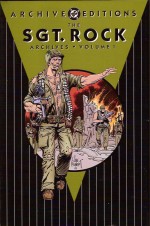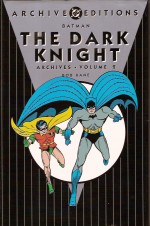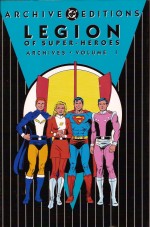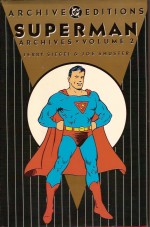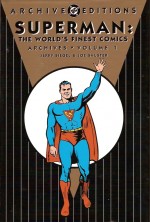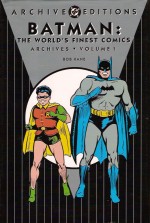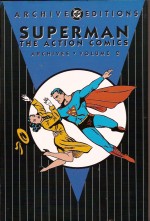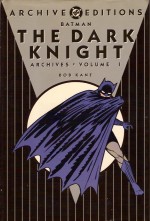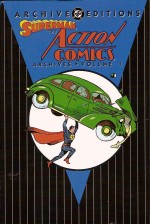
By Jerry Siegel & Joe Shuster with Leo Nowak and the Superman Studio (DC Comics)
ISBN: 978-1-56389-002-4
By 1941 the intoxicating blend of eye-popping action and social crusading which hallmarked the early exploits of the Man of Tomorrow had grown to encompass cops-and-robbers crime-busting, science fiction, fantasy and even whimsical comedy.
With a thrice-weekly radio serial, games, toys, a newspaper strip and a growing international media presence, Superman was definitely everybody’s hero, as confirmed in this classic compendium, gathering in their entirety issues #5-8 of his landmark solo title.
This first-edition deluxe hardback opens with an enchanting reminiscence from star artist and early contributor Jack Burnley, but once more no contents page or creator credits, so for the sake of expediency I’ve again used information and story-titles from later collections to facilitate the review. Besides, if you just buy this brilliant, lavish, full-colour hardback treasure-trove, you’ll be too busy reading the glorious stories to worry over such minor details…
Superman #9 (March/April 1941) was another four-star thriller with all the art credited to Cassidy and the Shuster Studio. ‘The Phony Pacifists’ is an enthralling espionage thriller that capitalised on increasing US tensions over “the European Warâ€, followed by a bulletin to members of the Supermen of America club, gag strip Henrietta and a page spotlighting Sports veterans before ‘Joe Gatson, Racketeer’ details the sorry end of a hot-shot blackmailer and kidnapper.
‘Mystery in Swasey Swamp’ pits the Man of Steel against a wave of eerie happenings and ruthless spies, whilst Frank Cooper’s prose vignette recalls the exploits of WWI in ‘A Bombing Flight’ and ‘Super-Strength by Superman’ advocated the benefits of regular exercise before ‘Jackson’s Murder Ring’ pitted the Metropolis Marvel against an ingenious gang of killers-for-hire.
Siegel & Shuster had created an unstoppable juggernaut and were constantly struggling to cope with it. All the Superman stories in issue #10 (May/June 1941) were scripted by Siegel, but illustrated by Studio stalwarts. ‘The Invisible Luthor’ (drawn by Leo Nowak) saw the malevolent mastermind contrive a devastating campaign of terror, and after the humorous fact-page ‘Calling All Cars’ the similarly illustrated adventure ‘The Talent Agency Fraud’ saw Superman and Lois Lane bust a gang of blackmailing thugs preying on star-struck girls.
Wayne Boring & the shop handled the last two Superman stories, beginning by exposing a scurrilous swami in ‘The Spy Ring of Righab Bey’ and, after text-tale ‘Big Leaguer’ by George Shute and Bolty’s (Henry Boltioff) factual frolics ‘It’s True!’ ,‘The Dukalia Spy Ring’ saw the Action Ace trounce thinly-veiled Nazis at a propaganda sports festival (topical and exotic themes of suspense were still necessarily oblique then, since at this time America was still officially neutral in the “European war.â€).
Superman #11 (July/August 1941) was an all-Nowak affair, beginning with ‘Zimba’s Gold Badge Terrorists’, as more thinly disguised Nazis “blitzkrieged†the USA, whilst after more gags and Boltinoff ‘Facts…’ the Man of Tomorrow battled rampaging giant animals in ‘The Corinthville Caper’, before scouring the world seeking a cure for ‘The Yellow Plague’. After Nelson Edwards’ nautical prose tale ‘Timely Rescue’ and yet more Boltinoff info-gags in ‘It’s So…’ Superman dashed home in time to foil ‘The Plot of Count Bergac’ and crushed a coterie of High Society gangsters.
Even though spies and sabotage plots were already a trusty part of the narrative currency of the times and many in America felt war was inevitable (patriotic covers were beginning to appear on many comic books), they were still a distant problem, impersonal and at one remove from daily life as experienced by the kids who were the perceived audience for these four-colour fantasies. That would change radically in the months to come…
For the meantime though, these final four yarns from Superman #12 (September/October 1941) are amongst the last pre-war stories of the Man of Tomorrow. Once again they were all scripted by Siegel with Leo Nowak drawing most of the comic output at this time. He’s responsible for the first two here…
‘Peril on Pogo Island’ found Lois and Clark at the mercy of rampaging tribesmen, although spies from a certain foreign power are at the back of it all, whilst ‘The Suicide Murders’ saw the plucky journalists facing a particularly grisly band of gangsters. After a Books Worth Reading feature and a gag page, John Sikela inked ‘The Grotak Bund’ wherein seditionists attempted to destroy vital US industries and, following Boltinoff’s ‘Kid Stuff’ and Roger Forrest’s prose crime-vignette ‘Safe Job’, fully illustrated the final tale as an old and indefatigable foe reared his shiny slaphead once more in ‘The Beasts of Luthor’, targeting far-flung Baracoda Island with a spectacular array of giant monsters.
Augmented by a host of delightfully mesmerising contemporary ads for cool toys and the company’s burgeoning line of comics super-stars, these Golden Age tales are priceless enjoyment, a fantastic window on comfortingly simpler times and some of the greatest Fights and Tights adventures ever crafted.
How can you possibly resist them?
© 1941, 1991 DC Comics. All Rights Reserved.

